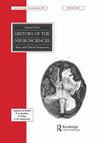Changing graphic representations of the brain from the late middle ages to the present
IF 0.3
3区 哲学
Q3 HISTORY & PHILOSOPHY OF SCIENCE
引用次数: 0
Abstract
“The brain is in the skull. The brain is in the skull.” When I was a fledgling medical student at the Medical College of Wisconsin in 1981, this was the mind-numbing daily mantra intoned as a microphone check before neuroanatomy lectures by research neuroscientist Robin L. Curtis (1926–2020). Curtis would then show image after image of the nervous system, describing elaborate neural pathways and often waxing eloquent about such thenstrange and esoteric topics as “the fields of Forel” (Forel 1877; Horisawa et al 2021; see Figure 1). Many of the images were difficult for neophyte medical students to fully grasp, and some of the material seemed unlikely to have any potential clinical application (or so I thought at the time). Less than four decades later, the fields of Forel are being increasingly considered as potential targets for stereotactic interventions in the treatment of movement disorders, behavioral disorders, and epilepsy (Neudorfer et al. 2017; Neudorfer and Maarouf 2018). Our current multifaceted and multilayered “picture” of the brain developed from the gradual evolution of graphic representations, particularly over the past 500 years, through recursive observation, abstraction, and conceptual interpretation. How such images are presented, even today, varies considerably among different scholars and when presenting material to different audiences. In 2016, the editorial board of the Journal of the History of the Neurosciences charged me with the responsibility for developing a special issue on the evolution of graphic representations of the brain. I had begun work on this topic in 2012 with studies related to plagiarisms of Andreas Vesalii’s (1543) by Juan Valverde de Hamusco and Geminus (Thomas Lambert or Lambrit); followed in 2014 by studies of the evolution of Vesalius’s representations of the brain in the period from 1538 to 1555; and then, finally, from 2016 to the present, by a much-expanded survey of the development of neuroanatomy and depictions of the brain (Lanska 2014a, 2014b, 2014c, 2015, 2018a, 2018b, 2018c, 2018d, 2018e; Lanska and Lanska 2013a, 2013b, 2014). Some aspects of this program of study were presented as special museum exhibits at the Dittrick Medical History Center for the 2018 meeting of the International Society for the History of the Neurosciences (ISHN), which was held in从中世纪晚期到现在不断变化的大脑图形表示
“大脑在头骨里。大脑在头骨里。”1981年,当我还是威斯康星医学院(medical College of Wisconsin)一名刚出道的医科学生时,这是神经科学家罗宾·l·柯蒂斯(Robin L. Curtis, 1926-2020)在神经解剖学讲座开始前检查麦克风时每天念叨的一句让人头脑发麻的咒语。柯蒂斯随后会展示一张又一张神经系统的图像,描述复杂的神经通路,并经常对当时奇怪而深奥的话题侃侃而上,如“佛瑞尔的领域”(佛瑞尔1877;Horisawa等2021;(见图1)。许多图像对于医学新生来说很难完全掌握,而且一些材料似乎不太可能有任何潜在的临床应用(至少我当时是这么认为的)。不到四十年后,Forel领域越来越多地被认为是立体定向干预治疗运动障碍、行为障碍和癫痫的潜在靶点(Neudorfer等人,2017;Neudorfer and Maarouf 2018)。我们目前的多面和多层次的大脑“图像”是从图形表示的逐渐演变中发展而来的,特别是在过去的500年里,通过递归观察、抽象和概念解释。即使在今天,这些图像的呈现方式在不同的学者之间以及在向不同的受众呈现材料时也有很大的不同。2016年,《神经科学史杂志》(Journal of the History of the Neurosciences)的编辑委员会让我负责制作一期关于大脑图形表征进化的特刊。我从2012年开始研究这个话题,研究Juan Valverde de Hamusco和Geminus (Thomas Lambert或Lambrit)对Andreas Vesalii(1543)的抄袭;随后在2014年,维萨里对1538年至1555年期间大脑表征的演变进行了研究;然后,最后,从2016年到现在,通过对神经解剖学发展和大脑描述的广泛调查(Lanska 2014a, 2014b, 2014c, 2015, 2018a, 2018b, 2018c, 2018d, 2018e;Lanska and Lanska 2013a, 2013b, 2014)。该研究计划的某些方面在迪特里克医学史中心作为特别博物馆展品,为2018年国际神经科学史学会(ISHN)会议提供了展示
本文章由计算机程序翻译,如有差异,请以英文原文为准。
求助全文
约1分钟内获得全文
求助全文
来源期刊

Journal of the History of the Neurosciences
社会科学-科学史与科学哲学
CiteScore
1.00
自引率
20.00%
发文量
55
审稿时长
>12 weeks
期刊介绍:
The Journal of the History of the Neurosciences is the leading communication platform dealing with the historical roots of the basic and applied neurosciences. Its domains cover historical perspectives and developments, including biographical studies, disorders, institutions, documents, and instrumentation in neurology, neurosurgery, neuropsychiatry, neuroanatomy, neurophysiology, neurochemistry, neuropsychology, and the behavioral neurosciences. The history of ideas, changes in society and medicine, and the connections with other disciplines (e.g., the arts, philosophy, psychology) are welcome. In addition to original, full-length papers, the journal welcomes informative short communications, letters to the editors, book reviews, and contributions to its NeuroWords and Neurognostics columns. All manuscripts are subject to initial appraisal by an Editor, and, if found suitable for further consideration, full- and short-length papers are subject to peer review (double blind, if requested) by at least 2 anonymous referees.
 求助内容:
求助内容: 应助结果提醒方式:
应助结果提醒方式:


